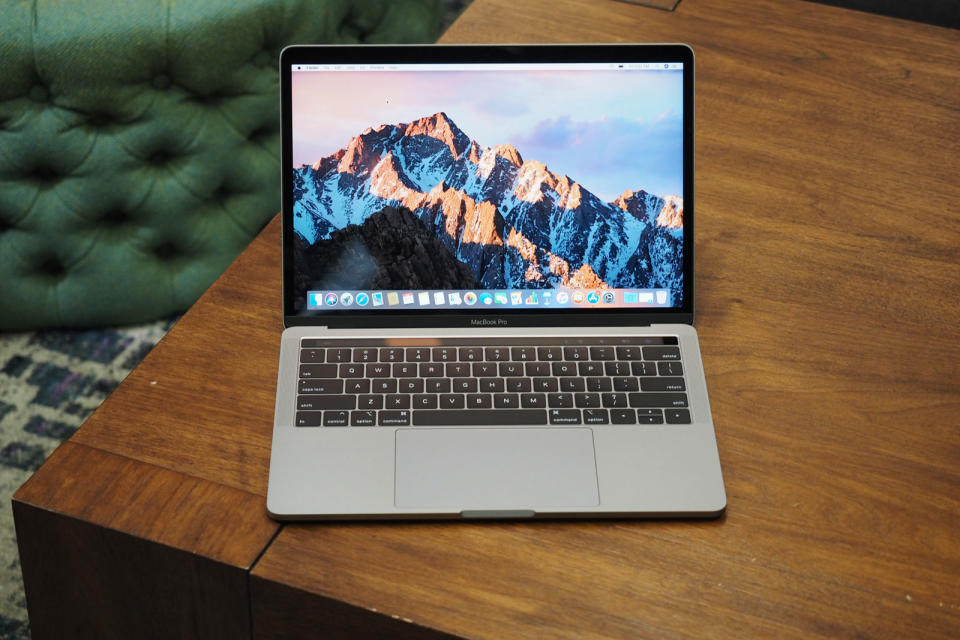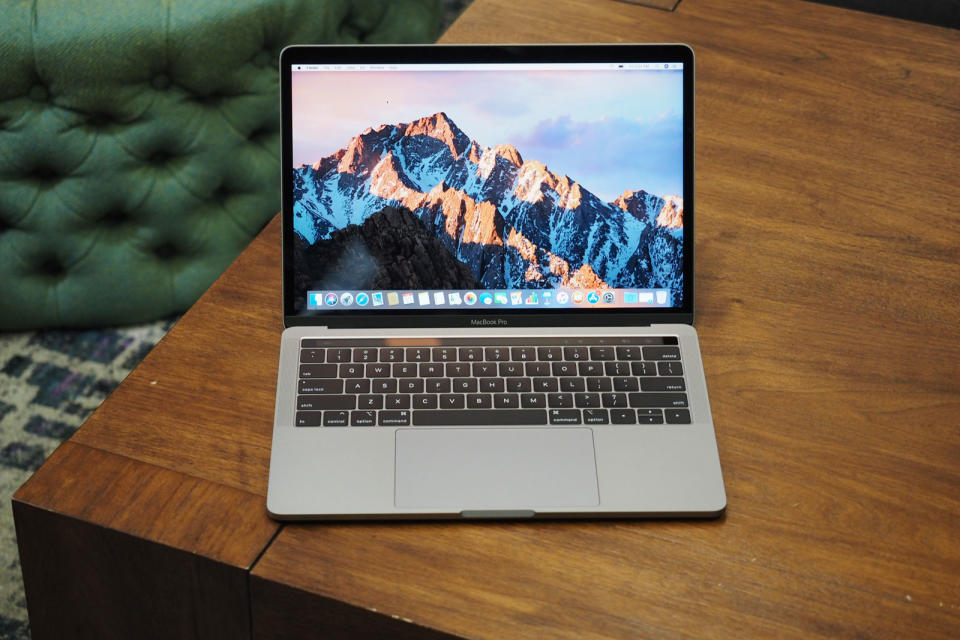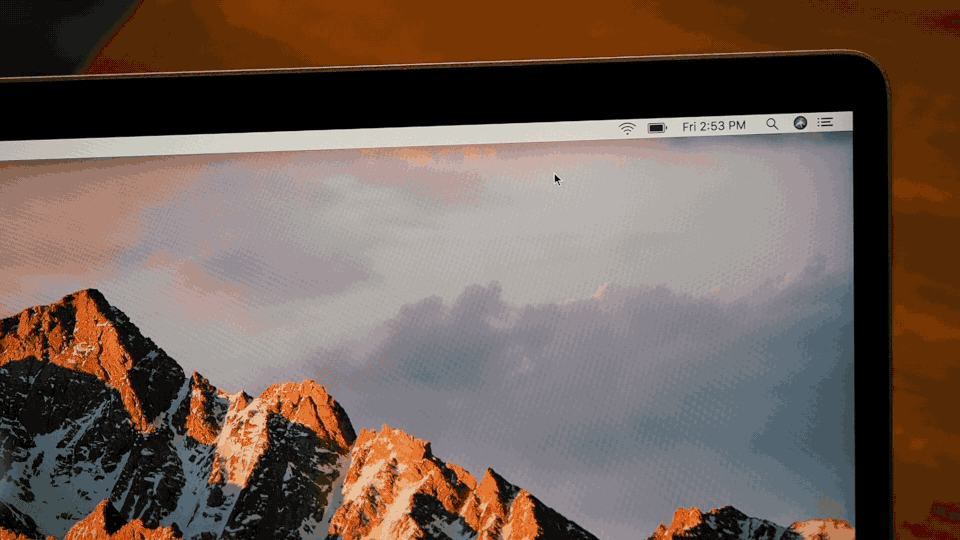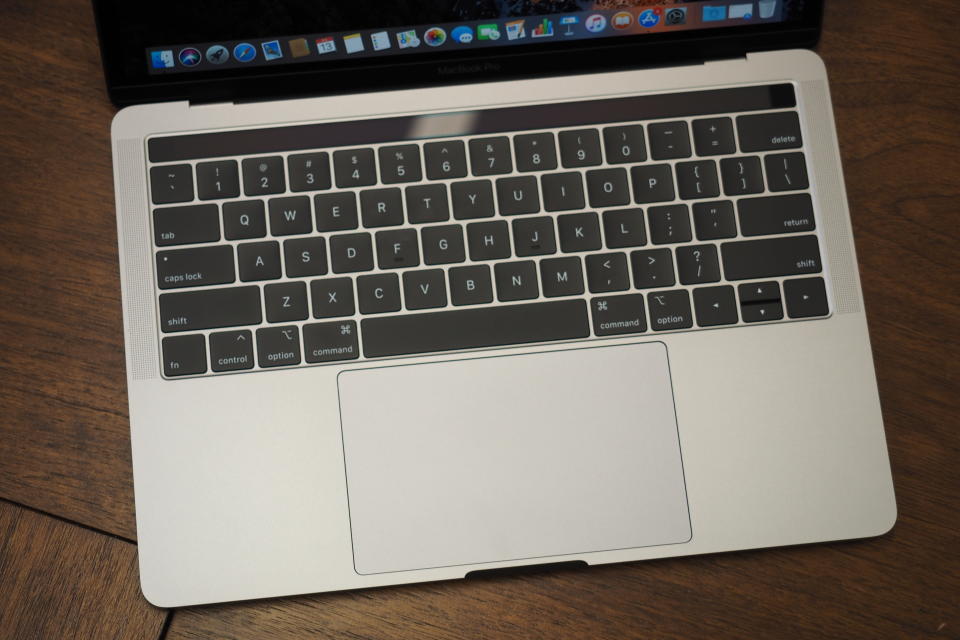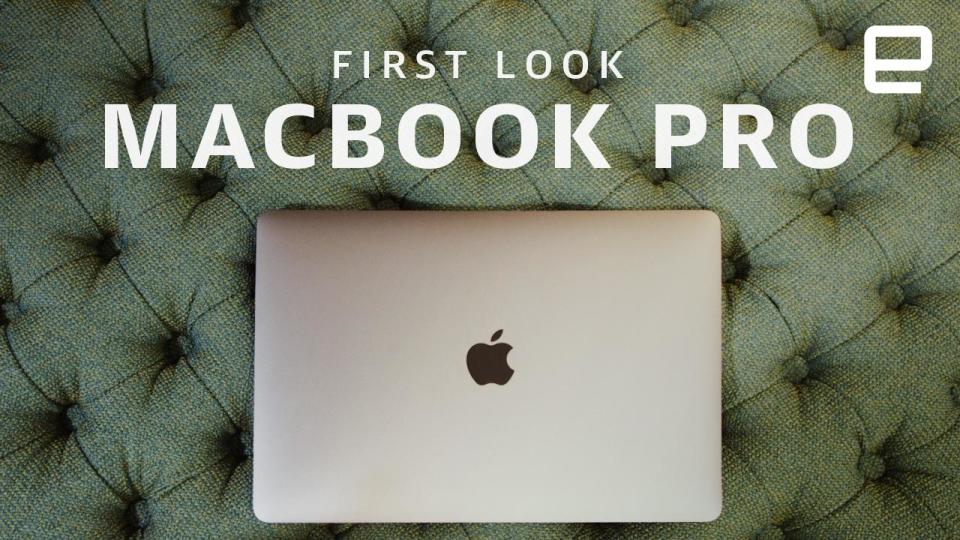MacBook Pro 2018 hands-on: Quieter keyboard, 'Hey Siri' and True Tone
For professionals, though, it's what's on the inside that will matter most.
Apple unveiled some refreshed MacBook Pros this week, and I promised we'd be getting a unit to review ASAP. Sure enough, look what arrived in the mail today: a shiny, new 13-inch Mac. As you can see, the exterior design is the same as the previous-gen MacBook Pro's, from the unibody aluminum enclosure to that giant Force Touch trackpad. Most of the changes here are under the hood (think: quad-core processors on the 13-inch model), so it's going to take a few days to test things like speed, graphics performance and battery life. We'll post a full review next week (and, ya know, spend the weekend indoors putting this thing through its paces). For now, here's a first look at some of the more noticeable differences. First off, you may have heard that the new MacBook Pro has an updated keyboard. The good news is, the keys are now quieter. The bad news is, that will probably not be a meaningful change for you. At this point, I've had the chance to do some side-by-side testing with the last-gen model. The new buttons are indeed quieter. You can still hear them, of course, but the sound is much more pleasing, much lower-pitched. Basically: less clacky. Personally, the MacBook Pro's keyboard never seemed loud to me in the first place, and I can't imagine that as many people were complaining about the typing volume as they were about the design of the buttons themselves. In a briefing with reporters this week, an Apple spokesperson claimed that customers love the precision and accuracy of the MacBook Pro keyboard, which is to say the design remains unchanged in the 2018 model. So if you were bothered by the flat layout, the short travel or a possible tendency to make typos (raises hand), this isn't the kind of keyboard update you've been waiting for. Moving on to obvious difference No. 2: the display. The 13- and 15-inch MacBook Pro now make use of Apple's True Tone technology, which first debuted on the iPad Pro two years ago. Setting aside all the marketing jargon, there's an ambient-light sensor inside that can read the color temperature of the light in your space and then adjust the screen accordingly. If you check the record, I probably said great things about the MacBook Pro's screen before True Tone was introduced (yep, I did), but once you toggle the setting on and off, the difference is hard to unsee. I imagine this feature will be great for everyday use, but people like photographers who are picky about color will probably want to disable it while they're working. Last thing: Apple included its custom T2 security chip, the same one already used in the iMac Pro. Among other things, that chip allows Siri to work in an always-on sort of way, so that you can say "Hey Siri" without having to hit the Siri icon. It works well, and you'll have a chance to set it up during the initial Mac setup process. That process takes just a minute -- you'll be asked to say a bunch of phrases into the mic. At least in my case, I never had to repeat anything, so it all went quickly. A word to the wise: Hands-free Siri works well on the Mac, but if you have an iPhone nearby it might chime in when you say the magic words "Hey Siri." For the sake of my testing, I temporarily turned off the feature on my iPhone, but that may or may not be a workable setup for you. (On the other hand, does it matter that my iPhone was the first to answer "who won the last World Cup game?" Probably not.) Anyway, as I said, there are lots of under-the-hood upgrades here: quad-core processors on the 13-inch Touch Bar MacBook Pro and six cores standard on the 15-inch model. There are also improved graphics and a larger battery inside both models to offset that heavier-duty processing power. The 15-inch model, which we're not testing this go-round, packs up to 32GB of RAM and up to 4TB of storage. (The 13-inch model now maxes out at 2TB, up from 1TB on the previous-gen edition.) These are just the sort of things we'll be testing in our full review -- and precisely the things that will matter most to the professionals this thing is aimed at. After all, anyone paying $1,499 and up for an upgraded 13-inch Pro (or $2,399 and up for the 15, no less) will need more than a quiet keyboard to be convinced.

